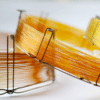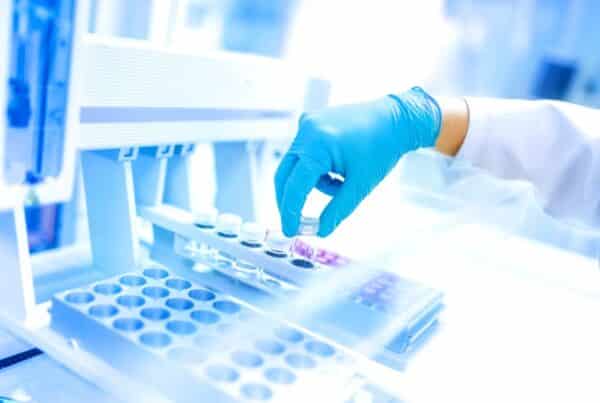In any laboratory, generating accurate and reliable results is of utmost importance. Cross-contamination, the unintentional transfer of contaminants between samples, can cause errors, compromised data, erroneous conclusions, and even potential harm to researchers. To uphold the integrity of your research, it is crucial to maintain a contamination-free environment. Read on as we explore a few key tips to minimize the risk of cross-contamination in the laboratory.
1. Establish and Enforce Strict Laboratory Protocols
The foundation of cross-contamination prevention lies in well-defined laboratory protocols. Lab managers must establish clear guidelines for handling samples, equipment, and personal protective equipment (PPE). These protocols should encompass every aspect of laboratory work, from sample preparation to data analysis. Scientists and lab personnel must receive comprehensive training on these protocols and regularly refresh their knowledge to ensure compliance.
2. Employ a Robust Cleaning and Disinfecting Protocol
Contaminants can linger on work surfaces, posing a significant risk of cross-contamination. The foundation of a contamination-free lab lies in the development and implementation of a comprehensive cleaning protocol. This protocol should encompass routine cleaning practices for lab surfaces, benches, hoods, equipment, and shared workspaces. Use cleaning agents specifically formulated for laboratory use, such as 70% ethanol or a bleach solution. Avoid using household cleaning agents, as they may leave residues that could interfere with experimental results. Regularly inspect and clean high-contact surfaces, such as pipettes, benchtops, and handles of equipment. Lab personnel should clean their workspace before and after each use.
3. Practice Effective Personal Hygiene
Maintaining good hand hygiene is essential in preventing cross-contamination. Lab personnel must wash their hands thoroughly with soap and water before and after handling samples, equipment, or any potentially contaminated surfaces. Alcohol-based hand sanitizers can be used in addition to, but are not a substitute for, proper handwashing. Avoid touching the face, eyes, or mouth during experiments, as these are common routes of microbial transfer.
4. Utilize Personal Protective Equipment (PPE) Properly
Appropriate usage of personal protective equipment (PPE) is essential to prevent the spread of contaminants. Lab managers must enforce the use of gloves, lab coats, safety glasses, and other necessary protective gear when handling samples or hazardous materials. PPE should be changed regularly and discarded after each use to prevent potential carryover of contaminants.
5. Designate Separate Workspaces and Equipment
Designing a well-organized laboratory layout is crucial in preventing cross-contamination. Separate different laboratory activities into designated work areas. Depending on the nature of your lab work, you may require areas for cell culture, DNA analysis, chemical synthesis, and so on. Physically segregate these areas, and restrict movement between them, to prevent the transfer of contaminants from one area to another. In shared spaces, consider scheduling work hours to minimize overlap between different research groups and maintain a clean environment. Pipettes and other instruments should not be shared between workstations unless they have been appropriately decontaminated. Properly labeled storage areas for chemicals, reagents, and samples can further minimize the risk of accidental mix-ups. Color-coding can be helpful for organizing work areas and supplies.
6. Implement a Robust Sample Tracking System
A reliable sample tracking system can help prevent cross-contamination and sample mix-ups. Lab managers should introduce barcoding or unique identifiers for each sample, which can be scanned and logged throughout the experimental process. This practice ensures accurate sample identification and minimizes the risk of unintentional contaminations during storage, processing, or analysis.
7. Train and Educate Lab Personnel
As we touched on in Tip #1, the success of any contamination prevention strategy hinges on the knowledge and commitment of lab personnel. Provide comprehensive training on contamination prevention and the importance of following established protocols. Ensure that all staff members understand and adhere to proper cleaning, disinfection, and personal hygiene practices. Encourage open communication among team members to address any concerns related to contamination promptly.
Final Thoughts…
As lab managers and scientists, it is our responsibility to maintain a contamination-free environment in our laboratories. A clean and contamination-free lab not only bolsters the reliability of research results but also contributes to a safer and more efficient scientific research environment. Through strict adherence to protocols, effective communication, and attention to detail, we can significantly reduce the risk of cross-contamination. Not only will these efforts uphold the integrity of our results but will protect the wellbeing of both researchers and the broader community as well.
More resources:
- Minimizing Contamination within Laboratories | University of Rochester
- Preventing cross contamination in an infectious disease testing laboratory | Medical Laboratory Observer (MLO)
- How to Avoid Contamination in a Lab | Technical Safety Services (TSS)
- Preventing Contamination in the Lab | SafetyVideos.com Preview
- Preventing Contamination Expert Video Tip | Illumina







